Every year, countless homes suffer fire damage that could’ve been avoided. Learning how to protect your home from fire can save lives and reduce expensive damage.
Knowing the right steps—and actually using the right equipment—really does make a difference when it comes to keeping your family safe.
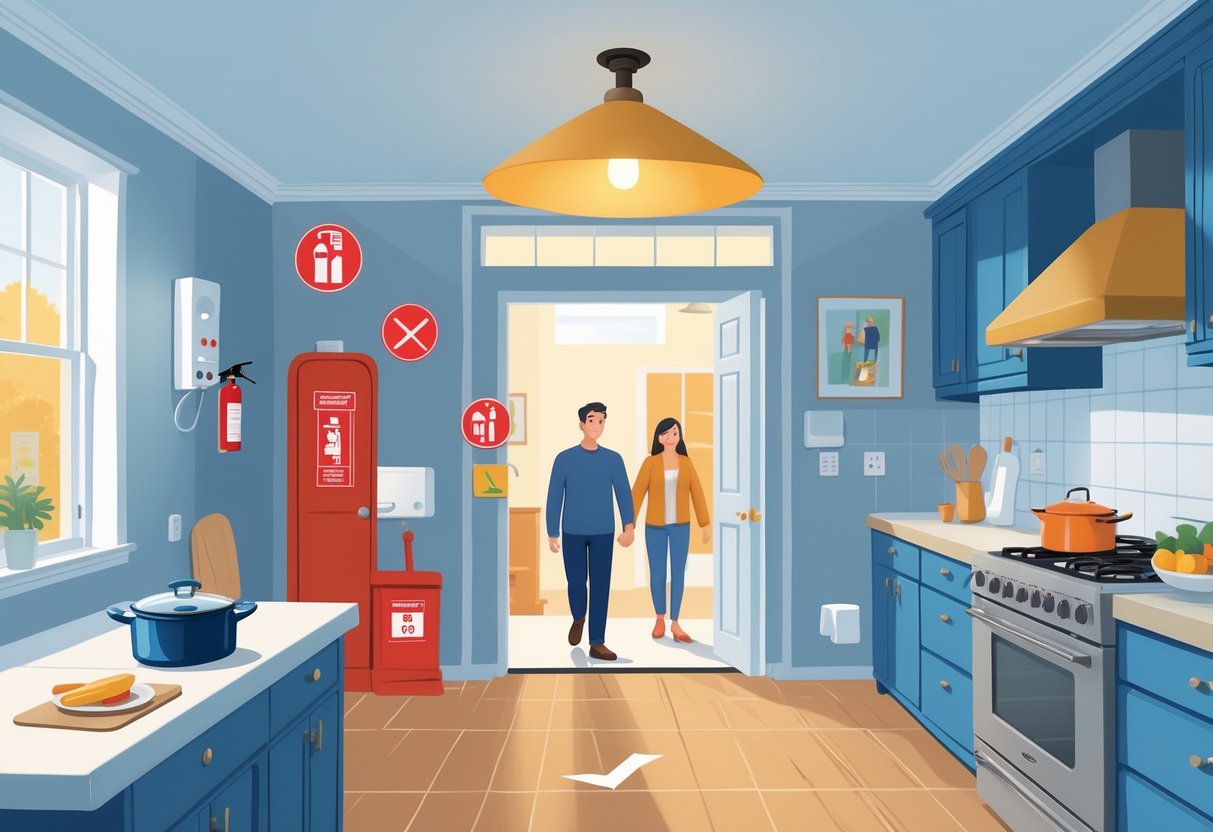
There are some surprisingly simple, expert-backed ways to keep a small issue from spiraling into disaster. Following practical fire safety tips can help families feel a lot more secure at home.
Key Takeaways
- Fire prevention starts with easy, smart actions.
- Having safety tools and checking hazards helps protect your home.
- Fast response and recovery steps limit lasting fire damage.
Essential Steps for Fire Prevention
Regular, simple actions can keep people, buildings, and their stuff much safer from fire. Staying on top of inspections, storing dangerous materials the right way, and making smart choices every day all help cut fire risks at home and work.
Need a Home Fix – Emergency or Routine?
From leaks and no-heat nights to simple tune-ups, our 24/7 hotline connects you with trusted local pros in minutes.
Routine Fire Safety Inspections
Inspections matter because they catch fire hazards before they turn into real problems. Every building should be checked for working smoke detectors, clear exits, and fire extinguishers that are easy to grab.
Key steps:
- Test smoke alarms each month and replace batteries once a year.
- Inspect fire extinguishers and make sure everyone knows their location.
- Keep hallways and doorways free from clutter to make exits easy to use.
- Look for damaged wiring, blocked vents, or any build-up of dust near appliances and heating units.
Professionals might stop by to check safety systems, but honestly, families or employees should be doing basic checks themselves too. Having a quick checklist for regular fire safety inspections keeps things straightforward and helps cover all the bases.
Safe Storage of Flammable Materials
Flammable stuff—think gasoline, propane, or paint thinners—needs to be stored with care. Bad storage just raises the odds of an accident.
Key guidelines:
- Store flammable liquids in containers with tight lids, away from heat and sunlight.
- Place these containers in a well-ventilated area, not in living or working spaces.
- Never keep flammable materials near open flames, heaters, or electrical outlets.
- Always label containers clearly and keep them away from children and pets.
Oily rags? Those should go in metal safety cans with self-closing lids. If you’ve got the option, an outdoor storage shed is usually safer than a basement or garage.
Managing Combustibles and Hazardous Materials
Combustibles like paper, cardboard, and fabrics catch fire fast if you’re not careful. Hazardous chemicals also up the fire risk if they’re stored or used carelessly.
Some best practices include:
- Avoid piling up clutter like old newspapers, boxes, or unused furniture.
- Store chemicals according to the label instructions, and keep incompatible chemicals separated.
- Dispose of paint, solvents, and cleaning agents safely, following local guidelines.
- Do not smoke or use candles near stored combustibles or chemicals.
At work, follow OSHA or local fire safety rules. Keep Safety Data Sheets (SDS) handy for all hazardous materials—seriously, it’s not just red tape.
Reducing Fire Risks in Daily Activities
Everyday habits can either stop fires before they start—or, well, make them more likely. Cooking, using space heaters, and even charging your phone can all be risky if you skip safety steps.
Practical tips:
- Never leave cooking food unattended on the stove.
- Keep towels, curtains, and paper goods away from stovetops and space heaters.
- Plug major appliances and heating devices directly into wall outlets, not extension cords.
- Unplug chargers and devices when not in use to cut fire risk from electrical shorts.
Teach your family or coworkers the basics of fire prevention and what to do if a fire starts. Running through fire drills now and then really does help everyone react faster when it counts.
Fire Safety Equipment and Home Protection
Having the right fire safety equipment at home can seriously cut the risk of major fire damage. Using and maintaining each device the right way is key to protecting people and property.
Selecting and Installing Smoke Alarms
Smoke alarms should go on every level of your home, including the basement and inside each bedroom. Mount them on the ceiling or high on a wall, away from vents and windows—that way, they’ll catch smoke early.
It’s smart to pick alarms with both photoelectric and ionization sensors. Photoelectric alarms spot smoldering fires faster, while ionization types are quicker for flaming fires. Many new alarms combine both in one device.
Follow the manufacturer’s instructions closely when setting them up.
Installation tips:
- Test alarms right after installation
- Label each alarm with its installation date
- Avoid installing alarms in kitchens or bathrooms to reduce false alarms
Some newer devices even have smart features—mobile alerts, integration with home security cameras, that sort of thing. Extra peace of mind, honestly.
Maintaining Fire Extinguishers and Sprinkler Systems
Fire extinguishers need regular checks to make sure they actually work when you need them. Every home should have at least one extinguisher on every floor, especially in the kitchen and garage.
Check the pressure gauge every month. Make sure the pin and tamper seal are intact. Replace or service any extinguisher that’s damaged or low on pressure.
Sprinkler systems need some love too. Test the system once or twice a year. Check for leaks, rust, or blockages in the sprinkler heads. Professional inspections help make sure the system meets local fire codes.
A simple maintenance checklist:
| Task | Frequency |
|---|---|
| Pressure checks | Monthly |
| Head inspection | Biannually |
| Professional review | Annually |
Upgrading to Interconnected Fire Alarms
Interconnected fire alarms can help everyone get out faster. When one alarm sounds, all of them go off. That’s a life-saver in bigger homes or if a fire starts far from the bedrooms.
There are wireless and hardwired options. Wireless systems are a breeze to add to older homes—no need for new wiring.
For best results, combine interconnected alarms with your other fire alarms and safety devices. Test the whole system every month. Change batteries at least once a year, or pick models with long-life batteries that last up to 10 years.
Some interconnected alarms can even link with smart home safety tools and security cameras, so you get alerts even if you’re not home. Pretty handy, honestly.
Mitigating Common Household Fire Hazards
Most house fires start with electrical problems, heating equipment, or fireplaces. Safe habits and regular maintenance go a long way to lower the odds of a serious fire.
Electrical Wiring and Appliance Safety
Faulty wiring and overloaded circuits are big causes of home fires. Homeowners should get regular inspections from licensed electricians, especially if the house is older than 20 years. Worn or cracked wires need to be swapped out, and outlets that spark or feel warm should get checked right away.
Don’t overload power strips or plug too many things into one outlet. Big appliances—like fridges and microwaves—should go straight into the wall, not extension cords or adapters.
Tip:
- Unplug small appliances when not in use
- Use surge protectors marked by a recognized testing lab
- Never run cords under rugs or carpets, as this traps heat
Keep electrical panels easy to reach. If they’re blocked, it slows down emergency shutoffs during a fire.
Proper Use of Space Heaters and Furnaces
Space heaters and furnaces need to be at least three feet from beds, curtains, or anything flammable. Pick heaters with an automatic shut-off if they tip over. Never use an extension cord for an electric space heater—it’s just not worth the risk.
Before turning on the furnace for the season, get it checked and cleaned by a pro. Dirty or clogged filters can overheat and sometimes even catch fire. Watch out for weird smells or noises, and always follow the manufacturer’s care instructions.
Do not use ovens or stoves for heat. They’re not made for it and can actually start fires or release dangerous fumes.
Fireplace and Chimney Maintenance
Fireplaces and chimneys collect creosote, a sticky residue that can catch fire if you let it build up. Chimneys need sweeping at least once a year, especially if you burn wood a lot.
Only burn dry, seasoned wood in the fireplace. Wet or green wood just creates more creosote and smoke. Put up a metal or glass screen to keep sparks from flying out.
Key tasks:
| Task | How Often |
|---|---|
| Clean chimney | Yearly |
| Check for obstructions | Before each use |
| Clear ashes (in metal bin) | After each fire |
Don’t leave a fire unattended, and keep flammable stuff well away from the hearth. Let ashes cool all the way, then put them in a metal container to dispose of them safely.
Responding to and Recovering From Fire Damage
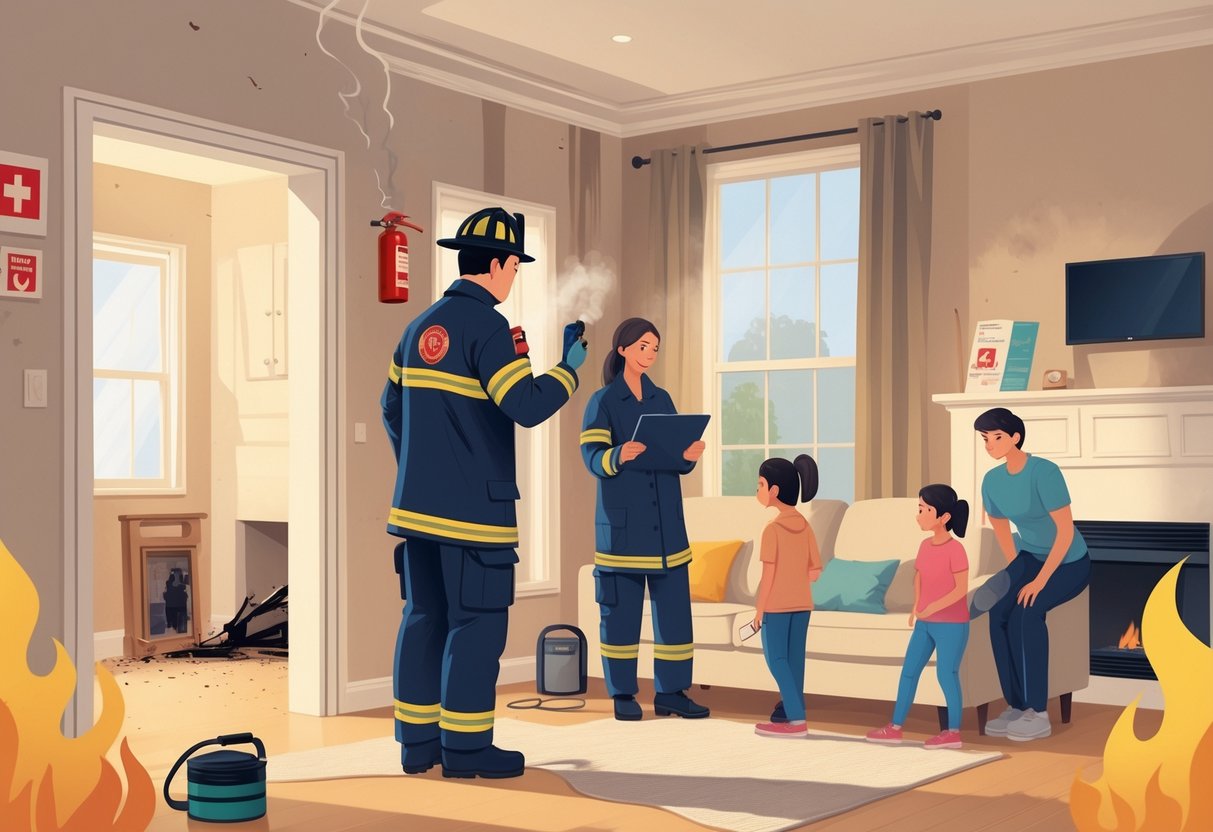
When a house fire happens, acting fast and carefully can make a massive difference. What you do next really matters for limiting damage and getting back on your feet.
Immediate Actions to Limit Fire Damage
Acting quickly after a fire is crucial. Call emergency services first, even if the fire looks small—better safe than sorry.
Don’t try to re-enter the building until the pros say it’s safe. Once you’re cleared, board up broken windows and doors to keep out bad weather (and nosy people). Shut off gas, electricity, and water to avoid extra hazards like leaks or electrical fires.
Important steps:
- Call the fire department, even if the fire seems out.
- Wait to enter the property until cleared to do so.
- Take photos and make a list of damaged items for insurance.
Reach out to your insurance company as soon as you can. File a claim right away so you can get started with the recovery process.
Professional Fire Damage Restoration
Professional fire damage restoration is crucial for safety and a thorough cleanup. Experts show up with specialized tools to remove water, burnt materials, and ash.
They’ll check for hidden damage inside walls and ceilings. Restoration teams also deal with smoke damage that’s easy to overlook.
They bring in equipment to dry out water left behind by firefighters. This step helps prevent mold and all the headaches that come with it.
A typical restoration process includes:
- Removing debris and damaged items.
- Drying out the property to stop mold.
- Cleaning soot and residue from surfaces.
- Repairing structures and replacing materials as needed.
Going with a certified company means you’re more likely to meet safety standards and get things done faster. Honestly, you want pros on your side here.
Managing Smoke Damage and Air Quality
Smoke damage can creep into parts of a house you’d never expect. Soot and chemicals stick to walls, furniture, and vents. It’s unsettling to think about breathing those particles in.
If it’s safe, open windows and run fans to air things out. Don’t touch the air conditioning—it just spreads smoke around. Air scrubbers or HEPA filters are a solid move for cleaning indoor air.
To manage smoke and air quality:
- Remove and clean soft items like curtains and carpets.
- Wipe down all hard surfaces with special cleaners.
- Use air purifiers designed to trap small particles.
- Have air ducts checked and cleaned by professionals.
Proper cleaning really does help cut down on odors and health risks from smoke residue. It’s worth the effort, even if it feels endless.
Effective Fire Damage Recovery Process
Recovery after a fire takes planning—and a fair bit of patience. Work with your insurance company to document losses and repairs.
Keep records of every expense during recovery. Set a timeline for repairs with your restoration service.
Focus on making the property safe before worrying about restoring living spaces. Replace important documents lost in the fire, like IDs or house titles.
Simple steps in the recovery process include:
- Creating a list of lost or damaged items.
- Following up with insurance adjusters.
- Scheduling repairs and checking quality.
- Seeking help from local support services if needed.
Frequently Asked Questions
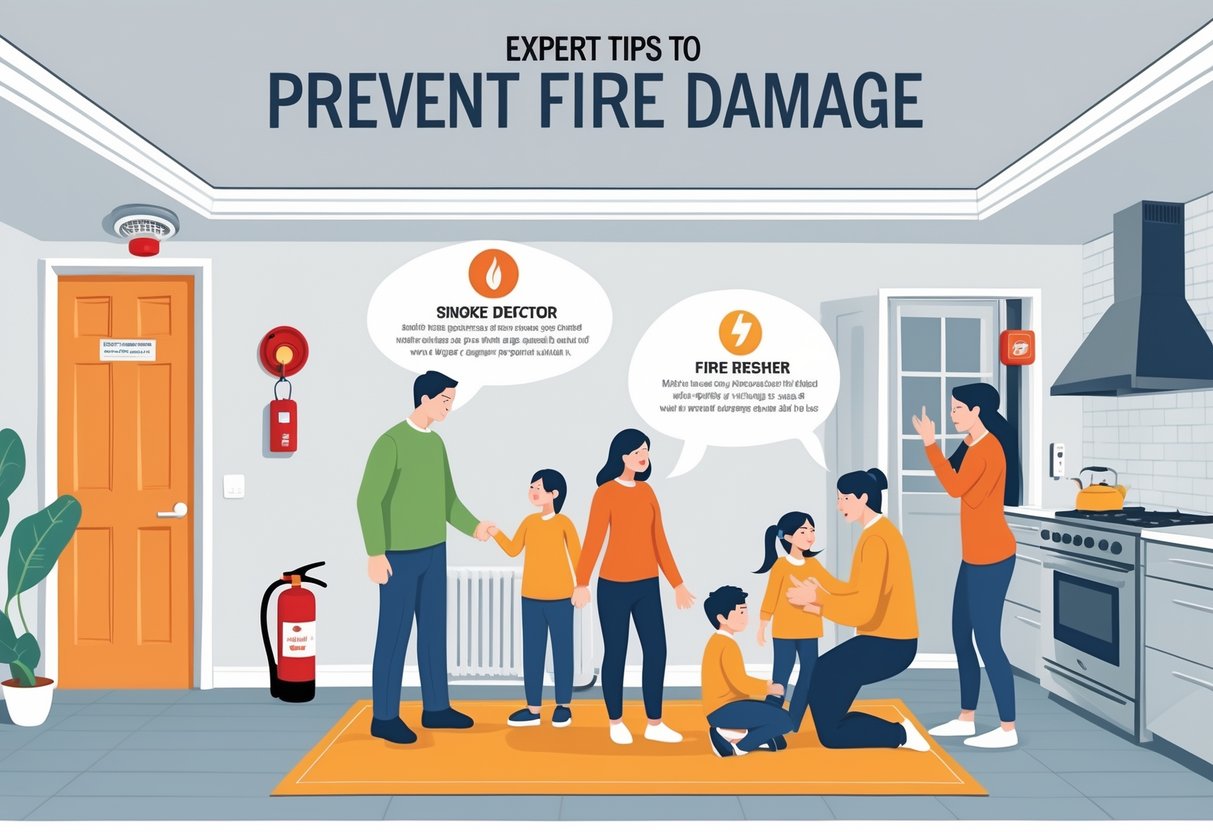
Fire safety honestly starts with some careful planning and a few simple habits. Anyone can help prevent fires by sticking to safe behaviors and following a few basic rules at home, work, or school.
How can homeowners ensure fire safety and prevent fire damage?
Homeowners should put smoke alarms in every bedroom, hallway, and on each floor. Test alarms every month and swap out those batteries once a year—yes, really.
Keep flammable stuff away from heaters and stoves. Have an escape plan, and actually practice it with everyone in the house (not just once, either).
What are the top strategies for fire prevention in the workplace?
Employers need to provide fire extinguishers and make sure everyone knows how to use them. Clear exit signs matter, and exit paths should never be blocked.
Regular fire drills help people get out quickly if it comes to that. Electrical equipment and machines should be checked regularly for problems—no shortcuts.
What steps should families take to mitigate fire risks at home?
Don’t leave burning candles or cooking food unattended. Kids should know not to mess with matches or lighters.
Plugging too many cords into one outlet is asking for trouble, so don’t do it. Share key phone numbers and exit locations with every family member.
What are essential fire safety guidelines for students in schools?
Students should know what the fire alarm sounds like and where the nearest exit is. Schools need to run fire drills every year so students know how to get out calmly.
Teachers should show students how to stay low under smoke and remind them never to use elevators during a fire. It’s simple stuff, but it matters.
How can children be taught about fire prevention effectively?
Adults should use clear words and examples that make sense for the child’s age. Show them how to “stop, drop, and roll” if their clothes catch fire—it sticks better than just telling.
Teach kids to tell an adult or call 911 if they see fire or smoke. Interactive lessons and fire safety visits can make a real difference in what they remember when it counts.
In the event of a fire, what actions should be taken to limit damage and ensure safety?
Everyone needs to get out of the building immediately. Don’t worry about grabbing your stuff—just leave.
If you can, close doors behind you as you go. This can help slow down the fire a bit.
Once you’re outside, call emergency services. Seriously, never head back in for anything.
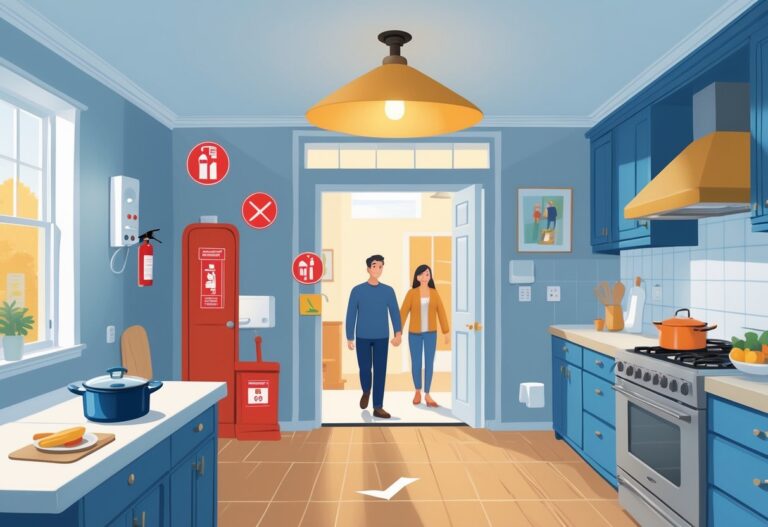

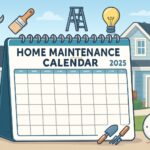
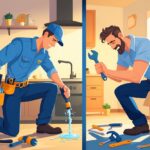
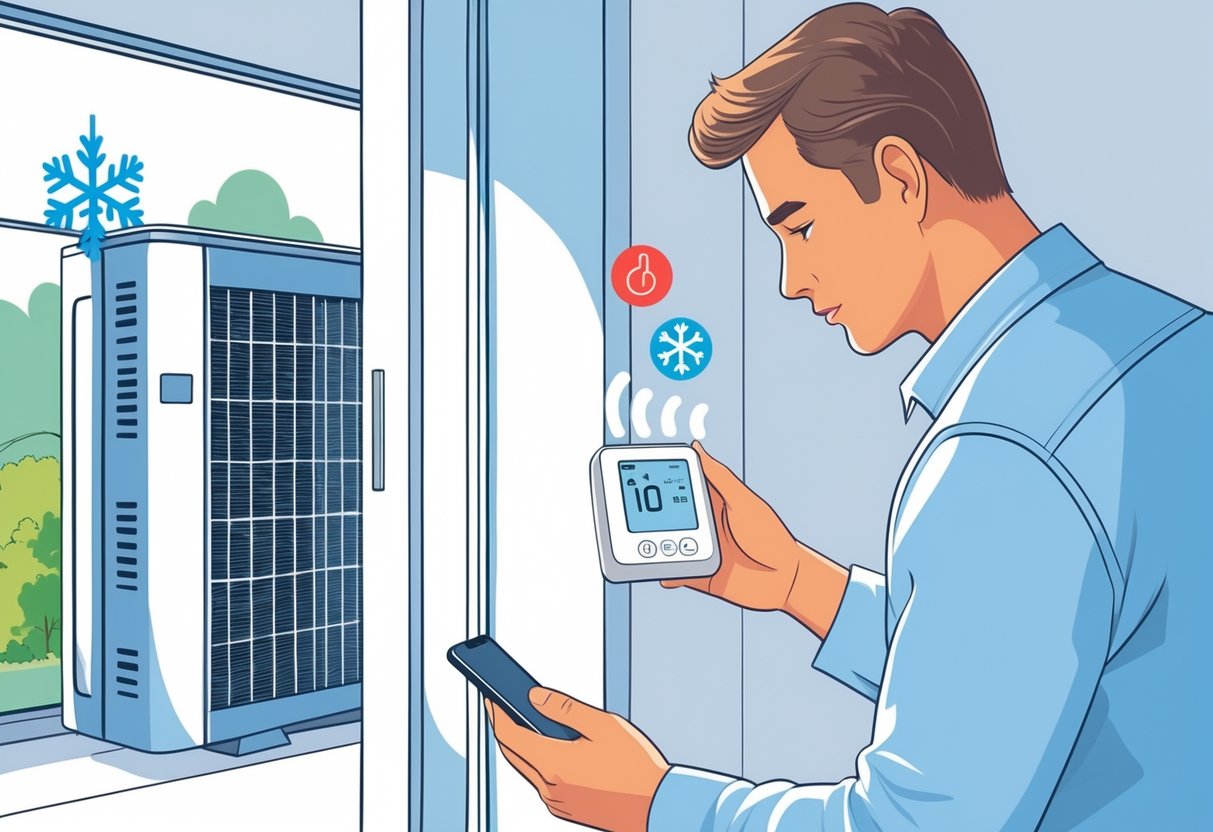
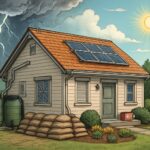
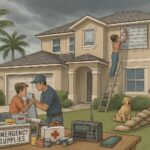
Leave a Reply